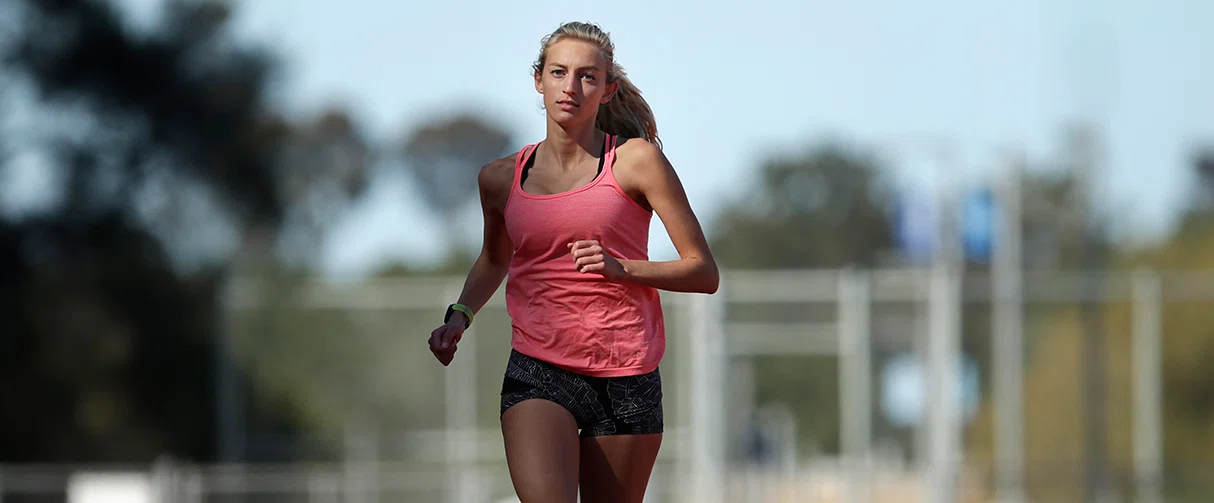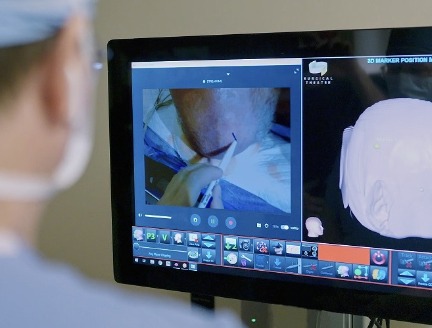


Precision Medicine
Modeling Risk of Bone Stress Injuries in Collegiate Runners
Multiple factors, including bone mineral density and limb length, are predictive of bone stress injuries in collegiate long-distance runners.

By analyzing the medical records of student athletes over a 7-year period, Houston Methodist and University of Kansas researchers have found that lower yet normal bone mineral density scores and shorter limb length are predictive of bone stress injuries in collegiate distance runners.
The study, published in the Orthopaedic Journal of Sports Medicine, also revealed that lower fat mass was associated with higher risk in males and less lean muscle in the legs was associated with higher risk among females.
Lower limb bone stress injuries involving the pelvis, tibia and femur are especially common among collegiate track and field athletes with long-distance runners sustaining the highest rates annually. The injuries occur when repetitive, load-bearing activities such as running, dancing and marching place more strain on the skeletal system than a bone or joint can withstand, resulting in a range of issues from pain and swelling to stress fractures.
Intrinsic factors, such as bone strength and body characteristics, and extrinsic factors, including training volume and intensity, are thought to play a role in the development of these injuries. However, the researchers noted that the general population norms and criteria for assessing risk are not always applicable to athletes. For instance, athletes who run 50 miles a week will have significantly higher baseline bone mineral density scores than average individuals who walk five miles a week.
"Regardless of what's clinically normal, the runners who had lower bone mineral density scores were significantly more likely to experience bone stress injuries," said Brad Lambert, Ph.D., manager of the Center for Human Performance Orthopedic Biomechanics Research Laboratory at Houston Methodist and the study's principal investigator. "Clearly, relative bone density is important, which is why specialized benchmarks for this population are needed."
For their study, the research team recruited both male and female distance runners from the University of Kansas track and field team. These participants underwent total body dual x-ray absorptiometry scans prior to the start of the fall season and were sorted based on whether they sustained bone stress injuries or not. The researchers found that the overall rate of bone stress injuries among study participants was 23%, with 17% of males and 29% of females experiencing lower limb bone stress injuries.
Bradley S. Lambert, PhD
Manager, Center for Human Performance
Houston Methodist
The team also measured total bone mass, bone mineral density (total body, spine, pelvis, femoral and tibial), percentage body fat, fat mass, lean mass (overall, legs, trunk and arms) and skeletal dimensions (shoulder width, trunk length, arm length, leg length and leg/trunk length ratio) of the study participants. Here, they found that the total body, spine, pelvis and leg bone mineral density measurements were within the normal range but significantly lower in the bone stress injuries group. In addition, shorter arm and leg length and lower leg/trunk ratio in both sexes, lower percent body fat in males and lower lean muscle mass of the leg in females were characteristics associated with an increased risk for bone stress injuries for the injured group.
While the researchers aren't certain why these factors were independently predictive, they suspect the sex-based differences have to do with how the body responds during times of low energy availability. As for the anatomical differences, the research team believes biomechanical factors related to loading and stride frequency may be at play, though more research is needed to confirm.
The research team said creating an easy way to identify risk is imperative so that appropriate interventions could be put in place.
"It's definitely in the runner's best interest and the team's best interest to prevent these injuries before they occur," Lambert said. "The only way to heal them is to rest, and that can sometimes take a long time. Also, once they occur, they're more likely to recur."
Eden McCleskey, August 2022








